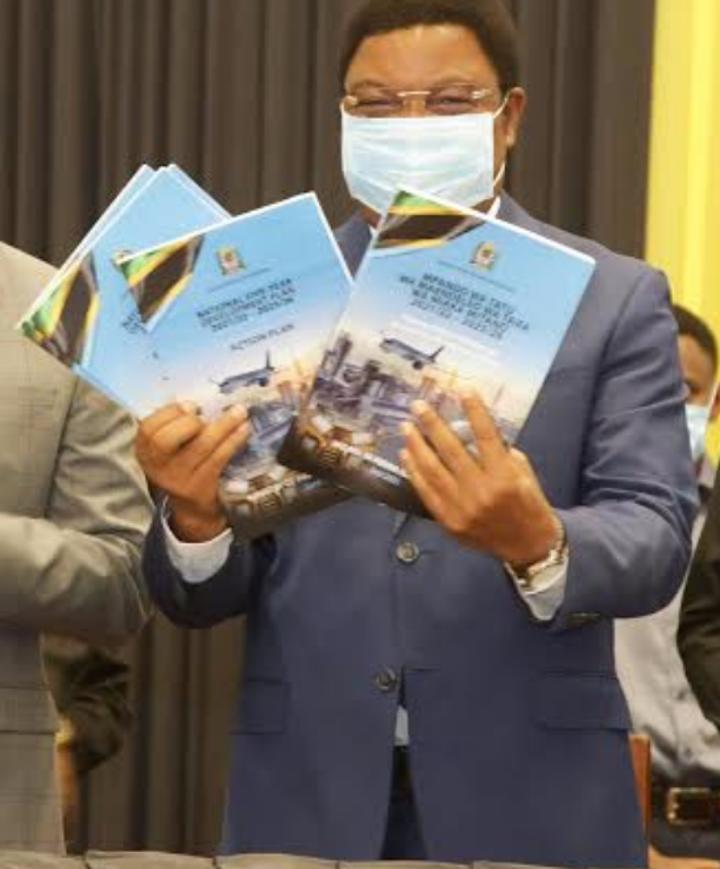Africa-Press – Tanzania. This apparently echoes President Samia Suluhu Hassan’s call upon Tanzanians to increase efforts, accountability and patriotism in order to achieve the Vision goals.
The Head of State underscored that the contribution of every citizen and development partners would be vital towards achieving the plan’s objectives.
“The history of our nation reminds us of many examples of great potential when we come together to implement our plans,” President Samia recalled when giving a keynote of the Third Five-Year Development Plan.
And economic pundits suggest that the best and most realistic innovative option for financing and executing the country’s III Five-Year Development Plan, is to walk away from the oldstyle revenue sources and go for bonds.
The introduction of special bonds is important since the 114tri/- plan came at a time when the country’s average growth, going by 10 years historical data from the Bank of Tanzania and Bureau of Statistics, is at 17.02 per cent.
Dr Hildebrand Shayo, an economist-cum-investment banker, says the government spares a small portion for development expenditure leaving a big chunk for recurrent since the main source of financing to date comes from old-style sources— revenues obtained from tax collections.
“This approach wouldn’t take our nation too far… at any level, such an increase [for development expenditure] is not adequate to meet the financial need desired to finance the wished-for development projects. This exerts pressure on implementing the five years document, hence the need to think outside the box and go for special bonds such as municipal, Eurobond, infrastructure… document,” Dr Shayo told ‘Daily News’ recently.
The economist said even relying on the development budget funds from concessional loans is a challenge because such loans given global challenges are diminishing and above all nonconcessional credits continue to be relatively expensive.
“In addition, continue to be overwhelmed by changeable conditions that may not only lead to delaying project implementation and high cost but can become riskier to our national security.”
The Five Years Third Development Plan implementation focuses on flagship projects including the Standard Gauge Railway (SGR), Julius Nyerere Hydropower Project (JNHPP), the East Africa Crude Oil Pipeline (EACOP), the purchase of new ships and planes and the construction of Mbegani fishing port at Bagamoyo.
Unveiling the FYDP III, Prime Minister Mr Kassim Majaliwa, expressed the government’s determination to ensure that the objectives of the plan are realised and warned it will not tolerate tax evasion, corruption, embezzlement, negligence, laziness and misuse of public funds in the course of its implementation.
“The government will continue to embrace creativity and receive views aimed at improving the implementation of the plan,” he said. It is high time to accept that the government and the banks alone cannot fund envisioned projects highlighted in the FYDP III prioritised programme.
Vertex International Securities, Advisory and Capital Markets Manager, Ahmed Nganya said the FYDP III is critical for realising the Vision 2025 considering that it’s a final plan.
“The document is well articulated, but we are waiting to see how it will be executed since execution is all that matters,” Mr Nganya told the ‘Daily News’. The FYDP III aims at creating an enabling and conducive environment for business by removing bottlenecks and introducing business friendly policies.
Mr Nganya, an economist, said, “We think perfect incorporation of the informal sector into the economy will be key in creating a strong middle class and maintaining the middle income status of the economy.”
The use of bonds if well planned would allow the project designers to tap into trillions of shilling worth of assets that could easily be available under institutional investors since the middle class will be growing.
“It is high time for Tanzania to start thinking about sovereign wealth funds seriously as such financing instruments are beginning to create a huge impact,” Dr Shayo said.
It is important to recognise that project bonds, unlike debt financing, offer an opportunity for institutional investors to take part in infrastructure national strategic projects through either listed, tradable securities and so forth that can offer superior riskadjusted earnings.
Thus, some economists suggested that for the projects to be effectively and timely implemented, the government should venture into a new area for sourcing the finance.
The Third Five Year Development Plan focuses on addressing the areas of inspiration and establishing a sustainable framework that will enable to achieve the goals of the National Development Vision.
Areas of inspiration in the Plan include: increasing the country’s capacity for production; building a competitive economy that will stimulate the country’s participation in trade and investment; and stimulating human development.
In achieving the priority areas of the Plan, the government intends to take solid steps in improving key productive infrastructures including roads, railways, water and air transport as well as reliable access to energy; continue to strengthen the business and investment enabling environment through effective policies to facilitate free private sector competition.
Also to improve and strengthen education and training systems, including reforming the education curriculum in line with labour market demand as well as integrating research and development with productive economic activities.







